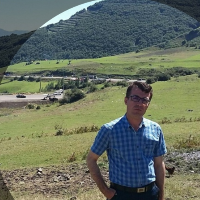Hydrological Drought Assessment and Analysis of its Characteristic Using the Stream flow Drought Index (SDI) at Hydrometry Stations in the Province of Ardabil
Hydrological drought can lead to a decrease in river flow and loss of the river ecosystem quality, which limits human use of the surface water. The stream flow drought index (SDI) has been used to assess the hydrological droughts in 33 hydrometric stations of the Province of Ardabil. The SDI was calculated using the DrinC software; subsequently, characteristics of the hydrological drought were classified and analyzed. The inter-relationship of the different components of hydrological drought with those of the flow rate were also examined. Subsequently, some of the hydrological drought characteristics were interpolated to detect the spatial variations. The results indicated that all of the studied stations experienced drought events. The maximum dry-period was 62 months at the Samian Station. The results of the standard classification of the SDI in 14 stations (Aladizge, Pole-Almas, Anbaran, Baroogh, Boran, Dostbeyglu, Gilandeh, Iril, Koozetopraghi, Mashiran, Neour, Samian, Shamsabad and Sola) indicated that the number of wet-months were larger than that of the dry-months. The severest drought was observed at the Pole-Almas Station (-1.05), while the highest frequency of wet-months had been recorded at the same station. The average intensity of the highest and lowest hydrological drought events at the Pole-Almas and Anbaran Stations were -1.05 and -0.57, respectively. The spatial variations of drought occurrence showed that the stations located in the upstream areas and the Sabalan piedmonts had the lowest drought occurrence in the study area. The severe and severest drought events had been occurred in small rivers with low discharge.
-
Analyzing the lateral changes of Aras River channel in Ardabil province using morphological indicators
Fariba Esfandyari Darabad, Sayyad Asghari Saraskanroud, Mehdi Ghandaiasl, *
Journal of Rs and Gis for natural Resources, Winter 2025 -
Determining the forest fire susceptibility map in the Astara city using the Analytical Hierarchy Process (AHP) and Frequency Ratio Model (FR)
*, Mohammad Golshan, Roghayeh Jahdi
Iranian Journal of Forest and Range Protection Research, -
Analysing the Quality Karaj City Green Spaces using Remote Sensing Ecological Index (RSEI)
Nazanin Naseri, Milad Hosseinzadeh Niri, *
Journal of Geography and Environmental Studies, Spring 2025 -
Scenario-based land use management to restore natural areas and reducing soil erosion rate in a competing land uses condition
Khadijeh Haji, Abazar Esmali-Ouri *, ,, Habib Nazarnejad
Anthropogenic Pollution Journal, Summer and Autumn 2024 -
Wildfire Risk Assessment in Zagros Forests using Geographic Information System and Best-Worst Method (BWM) (Case Study: Dore Chegeni County, Lorestan Province)
Roghayeh Jahdi *, Vahid Beiranvandi,
Journal of Geography and Environmental Studies, -
Application of SWOT analysis with separation of natural and anthropogenic factors in the integrated management of the Mikhsaz Watershed, Mazandaran Province
Reza Chamani, Hengameh Shekohideh, Khatereh Zare, Reza Zarei, , Leila Hemati, Vahid Moosavi, Abdulvahed Khaledi Darvishan *
Journal of Watershed Engineering and Management, -
GIS-based Determining the Landslide hotspot Occurrence using Getis-Ord Index in Gharnaveh Watershed, Golestan Province
Amirhosein Ghorbani, *, , Masoud Jafari Roodsari
Hydrogeomorphology, -
Determining Hydrological Drought Characteristics Using Severity-Duration-Frequency Curves and Flow Thresholds Levels in Ardabil Province Rivers
, Abazar Esmaliouri, *, Mearaj Sharari,
Journal of Water and Soil Resources Conservation,





